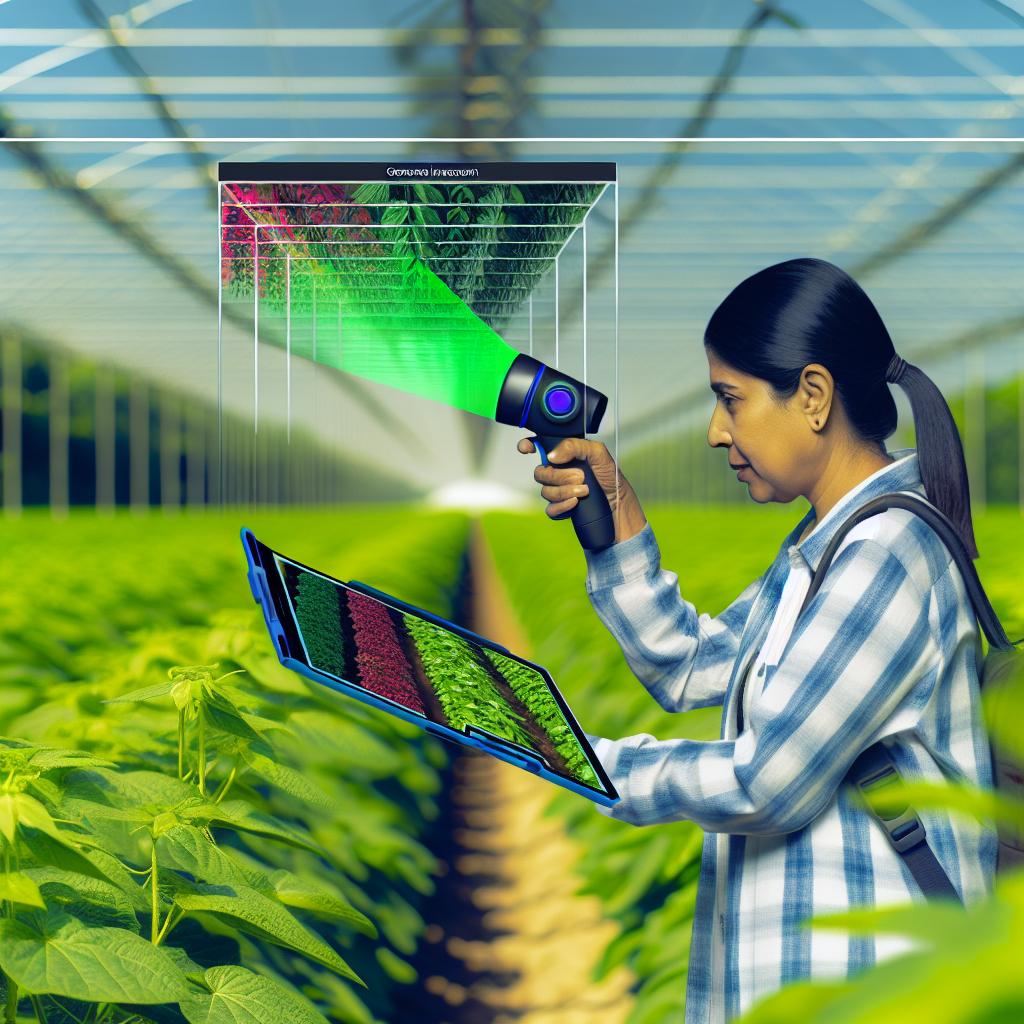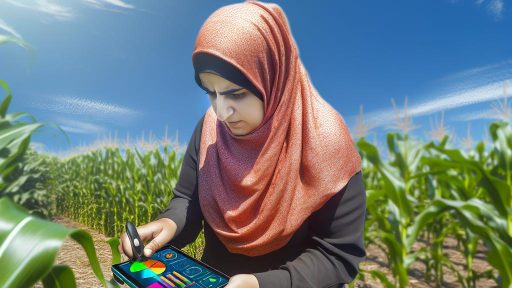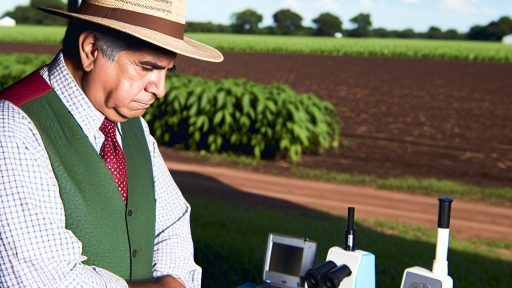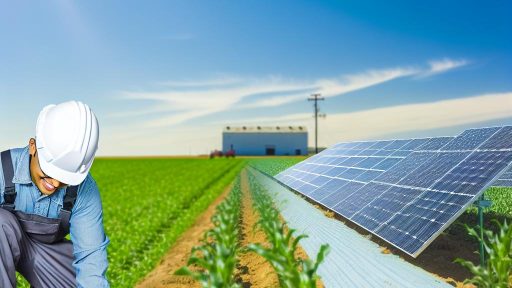Introduction to Imaging Technology in Agriculture
Imaging technology plays a vital role in modern agriculture.
This technology enhances the ability to detect crop diseases early.
Farmers utilize various imaging techniques for better crop management.
Remote sensing and drone imagery are two prevalent applications.
These tools improve decision-making and resource allocation.
Types of Imaging Technology
Several imaging technologies are available to farmers today.
High-resolution satellite imagery assists in monitoring large fields.
Thermal imaging detects plant stress by assessing temperature variations.
Multispectral and hyperspectral imaging analyze crop color and health.
Each type serves a specific purpose in disease detection.
Benefits of Using Imaging Technology
One significant advantage is increased efficiency in crop monitoring.
Imaging technology allows for timely interventions during disease outbreaks.
Farmers can save costs by applying targeted treatments.
This approach minimizes chemical usage and promotes sustainability.
Ultimately, enhanced yields and quality arise from proactive measures.
Transform Your Agribusiness
Unlock your farm's potential with expert advice tailored to your needs. Get actionable steps that drive real results.
Get StartedBest Practices for Implementation
Successful adoption involves training and familiarization with tools.
Choosing the right imaging system is critical to achieving desired results.
Calibration of devices ensures accuracy in readings and assessments.
Regular data analysis helps in tracking disease progression.
Collaborating with agricultural experts can guide effective usage.
Types of Imaging Technologies Used in Crop Disease Detection
Remote Sensing
Remote sensing employs satellite imagery to monitor crop conditions.
This technology detects variations in plant health over large areas.
It captures data on soil moisture, temperature, and vegetation indices.
Farmers use this information to identify potential disease outbreaks.
Thermal Imaging
Thermal imaging detects temperature differences in plants.
It helps pinpoint areas under stress, often indicating disease presence.
This technology highlights wilting or damaged plants through infrared radiation.
Moreover, it assists in monitoring irrigation effectiveness.
Multispectral Imaging
Multispectral imaging captures data across multiple wavelengths.
This method allows for detailed analysis of photosynthetic activity.
By comparing bands, farmers can identify unhealthy plants sooner.
Additionally, it reveals nutrient deficiencies that could lead to diseases.
Hyperspectral Imaging
Hyperspectral imaging provides even more detailed spectral information.
This technology analyzes hundreds of wavelengths to detect diseases.
It detects subtle changes in plant health often missed by other methods.
As a result, it can identify infections at an early stage.
Drone-Based Imaging
Drones equipped with cameras enhance on-the-ground assessments.
These devices can cover extensive areas quickly and efficiently.
They provide real-time data to farmers about crop conditions.
Showcase Your Farming Business
Publish your professional farming services profile on our blog for a one-time fee of $200 and reach a dedicated audience of farmers and agribusiness owners.
Publish Your ProfileAdditionally, drones can reach fields that are otherwise difficult to analyze.
Optical Imaging
Optical imaging uses visible light to observe crop conditions.
This traditional method offers a simple way to assess plant health.
Farmers can identify signs of disease visually during their routine checks.
Furthermore, it allows for immediate remediation actions if needed.
Importance of Early Detection of Crop Diseases
Early detection of crop diseases plays a crucial role in modern agriculture.
It significantly reduces crop losses due to diseases.
Farmers benefit immensely from identifying problems before they escalate.
Timely intervention can protect both yield and quality of the harvest.
Additionally, it helps in minimizing the necessity for chemical treatments.
When diseases are detected early, sustainable farming practices are enhanced.
Protecting Crop Health
Crop health is paramount for an efficient agricultural economy.
Detecting diseases early helps safeguard this health.
Farmers can employ targeted treatments to combat specific ailments.
Consequently, this targeted approach reduces waste of resources.
Boosting Profitability
Profitability directly correlates with effective disease management.
Early detection limits the spread of diseases to neighboring crops.
Thus, farmers maximize their returns by preserving more of their harvest.
Furthermore, it allows for better planning and resource allocation.
Improving Food Security
Food security remains a critical global issue.
By ensuring early detection of crop diseases, we bolster food supply chains.
Healthy crops lead to less food scarcity and more availability.
This proactive approach contributes to meeting the nutritional needs of populations.
Encouraging Sustainable Practices
Implementing early disease detection fosters sustainable agriculture.
It helps reduce reliance on chemical pesticides.
Consequently, this minimizes harmful impacts on the environment.
Sustainable practices also promote biodiversity within farming systems.
Learn More: Enhancing Food Safety With Blockchain In Agricultural Supply Chains
Best Practices for Selecting Imaging Equipment
Identify Your Needs
Start by assessing the specific requirements of your crop disease detection project.
Understand the types of diseases you need to identify.
Consider the scale of your farming operation.
Also, evaluate the budget available for imaging technology.
Choose the Right Imaging Technology
Select appropriate imaging modalities for your needs.
Options include multispectral, hyperspectral, and thermal imaging.
Each type has its strengths in tackling different disease symptoms.
For example, multispectral cameras are useful for identifying stress in crops.
Ensure High-Quality Resolution
Resolution significantly affects disease detection accuracy.
Invest in equipment that provides high-resolution images.
Ensure the camera can capture details at the scale relevant to your crops.
Higher resolution allows for better identification of early disease symptoms.
Showcase Your Farming Business
Publish your professional farming services profile on our blog for a one-time fee of $200 and reach a dedicated audience of farmers and agribusiness owners.
Publish Your ProfileEvaluate Portability and Ease of Use
Consider the portability of your chosen imaging equipment.
Portable systems can be moved easily between different fields.
Look for user-friendly interfaces that require minimal training.
Incorporate Data Management Features
Effective data management is crucial for imaging technology.
Choose systems that offer easy data storage and retrieval methods.
Consider software that integrates with existing agricultural management systems.
Check Compatibility with Other Tools
Ensure the imaging equipment can work seamlessly with other tools.
Compatibility enhances your overall disease detection process.
For instance, linking with drones can expand your imaging capacity.
Regular Maintenance and Updates
Implement a regular maintenance schedule for your equipment.
Routine updates will ensure optimal performance over time.
Stay informed about new advancements in imaging technology.
Discover More: Benefits Of Advanced Crop Disease Detection Technologies For Today’s Farmers
Integrating Imaging Technology with Other Agricultural Practices
Leveraging Drones for Precise Crop Monitoring
Drones provide high-resolution imaging of crops from above.
Farmers can capture images at various growth stages.
This allows for timely identification of disease symptoms.
Moreover, drones can cover large areas quickly.
Consequently, farmers save time and resources during assessments.
Combining Imaging with Soil Analysis
Imaging technology works best when paired with soil health monitoring.
Regular soil sampling reveals nutrient deficiencies.
Farmers can adjust their interventions based on combined data.
This holistic approach enhances crop resilience against diseases.
Furthermore, it promotes sustainable farming practices.
Implementing Machine Learning Algorithms
Machine learning can analyze imaging data effectively.
Patterns in the data help predict potential outbreaks.
Farmers can receive alerts through connected applications.
Such technologies enable proactive disease management strategies.
Ultimately, this leads to healthier crops and higher yields.
Collaborating with Agricultural Experts
Integrating imaging technology requires expertise.
Farmers should work with agronomists and plant pathologists.
These experts can interpret imaging data accurately.
Additionally, they provide actionable recommendations for interventions.
Building strong partnerships is crucial for success.
Training and Education for Farmers
Accessible training on imaging technology is essential.
Workshops can familiarize farmers with new tools.
Hands-on experiences enhance understanding and confidence.
Farmers should also stay updated on emerging technologies.
This commitment to learning fosters innovation in the field.
Find Out More: Benefits of Automated Irrigation Systems in Agriculture

Data Analysis Techniques for Interpreting Imaging Results
Understanding Imaging Data
Imaging technology generates massive amounts of data.
Showcase Your Farming Business
Publish your professional farming services profile on our blog for a one-time fee of $200 and reach a dedicated audience of farmers and agribusiness owners.
Publish Your ProfileIt is crucial to understand the type of data collected.
This understanding forms the basis of effective analysis.
Different imaging techniques result in varied data formats.
For instance, multispectral images highlight different wavelengths.
Understanding these wavelengths assists in identifying diseases.
Preprocessing Data for Analysis
Preprocessing enhances the quality of the imaging data.
This step involves filtering and noise reduction techniques.
Also, normalization adjusts data to a common scale.
Moreover, image enhancement techniques improve clarity.
This makes it easier to identify subtle disease indicators.
Feature Extraction Methods
Feature extraction identifies critical characteristics in images.
This step is vital for accurate disease detection.
Common methods include texture analysis and color histograms.
Additionally, artificial intelligence algorithms can assist.
These algorithms analyze patterns within the image data.
Machine Learning Techniques
Machine learning plays a significant role in data interpretation.
It helps classify and predict crop diseases effectively.
Supervised learning techniques rely on labeled data.
Conversely, unsupervised learning finds patterns in unlabeled data.
Combining these techniques yields better accuracy.
Utilizing Statistical Analysis
Statistical analysis supports the validation of imaging results.
It helps quantify the relationship between variables.
Regression analysis can predict the likelihood of disease.
Additionally, hypothesis testing assesses data significance.
Statistical tools enhance the reliability of the findings.
Visualizing Data for Better Insights
Data visualization simplifies complex results.
Graphs and charts highlight critical trends and patterns.
Interactive dashboards can help farmers interpret data easily.
Effective visualization promotes informed decision-making.
Moreover, it aids in communicating findings to stakeholders.
Delve into the Subject: Energy Efficiency Strategies for Agricultural Businesses
Case Studies: Successful Implementation of Imaging Technologies
Introduction to Imaging Technologies
Imaging technologies play a vital role in agriculture today.
They enhance crop disease detection using advanced techniques.
Farmers benefit significantly from these innovations.
Case Study: Precision Agriculture Solutions
Precision Agriculture Solutions implemented aerial imaging in their operations.
This technology identifies crop health issues early.
As a result, farmers can apply treatments more effectively.
They reported a 20% increase in yield after adopting this method.
Details of Implementation
The company equipped drones with high-resolution cameras.
These drones captured images of the entire field.
Showcase Your Farming Business
Publish your professional farming services profile on our blog for a one-time fee of $200 and reach a dedicated audience of farmers and agribusiness owners.
Publish Your ProfileAnalysis software processed the images for disease detection.
Moreover, this approach reduced labor costs significantly.
Case Study: AgroTech Innovations
AgroTech Innovations utilized satellite imaging for disease monitoring.
This method provides a broader view of agricultural lands.
It allows for timely interventions across large farms.
Farmers noted improved resilience to health threats.
Approach and Outcomes
Satellite data often helps in assessing long-term crop health.
It identifies patterns that traditional methods can miss.
Farmers using this technology decreased pesticide use by 30%.
Consequently, this led to more sustainable farming practices.
Case Study: GreenField Analytics
GreenField Analytics focused on real-time imaging tools.
They provided farmers with mobile applications linked to imaging tech.
This application offers instant alerts on crop health changes.
Farmers reported quicker response times to potential outbreaks.
Real-Time Monitoring Benefits
This technology encourages proactive disease management.
Farmers increased profitability by optimizing their treatments.
As a result, crop loss percentages declined drastically.
Implications of Imaging Technologies
These case studies illustrate the impact of imaging technologies.
With proper implementation, farmers see improved profits.
Moreover, these advancements promote sustainable agriculture.
Consequently, imaging technologies will continue to shape the future of farming.
Future Trends and Innovations in Imaging for Agriculture
Advancements in Remote Sensing
Remote sensing technology continues to evolve rapidly.
Next-generation satellite imagery provides higher resolution data.
This enhances the accuracy of crop disease detection.
Furthermore, drones equipped with advanced sensors are becoming more common.
They allow farmers to monitor large areas efficiently.
In addition, these tools offer real-time feedback on crop health.
Artificial Intelligence Integration
Artificial Intelligence (AI) plays a significant role in crop monitoring.
AI algorithms analyze imaging data for early disease detection.
This leads to faster response times for farmers.
Moreover, machine learning models improve over time with more data.
This increases the reliability of disease predictions.
Use of Multispectral and Hyperspectral Imaging
Multispectral imaging provides insights beyond visible light.
It captures data across various wavelengths to detect subtle changes.
Likewise, hyperspectral imaging offers even more detailed spectral information.
These technologies help identify specific stressors affecting crops.
Consequently, farmers can apply targeted interventions swiftly.
Collaboration with Tech Companies
Partnerships are crucial for agricultural advancements.
Collaboration between growers and technology firms leads to innovative solutions.
Companies like AgriTech Innovations are pioneering new imaging systems.
Showcase Your Farming Business
Publish your professional farming services profile on our blog for a one-time fee of $200 and reach a dedicated audience of farmers and agribusiness owners.
Publish Your ProfileThese joint efforts facilitate the development of user-friendly tools.
Farmers benefit from accessing advanced technology tailored to their needs.
Focus on Sustainability
As agriculture shifts toward sustainability, imaging technology plays a key role.
These tools help monitor resource use and environmental impacts.
By tracking crop health, farmers can minimize pesticide use.
This supports eco-friendly farming practices.
Additionally, sustainable imaging practices enhance soil and water conservation.
Future Developments in Imaging Technology
Looking ahead, imaging technology will become increasingly sophisticated.
Future innovations will likely include real-time analytics and decision support tools.
Moreover, we may see greater integration of imaging with other smart farming technologies.
This combination will provide comprehensive insights into farm management.
Ultimately, these advancements will enable farmers to make more informed decisions.
Additional Resources
Specialty Crop Block Grant Program Fiscal Year 2023 Description of …
Drone‐based imaging sensors, techniques, and applications in …




